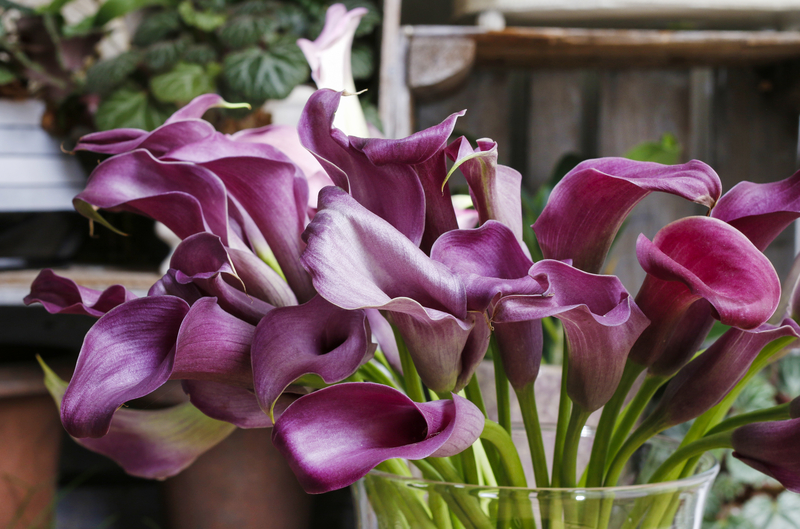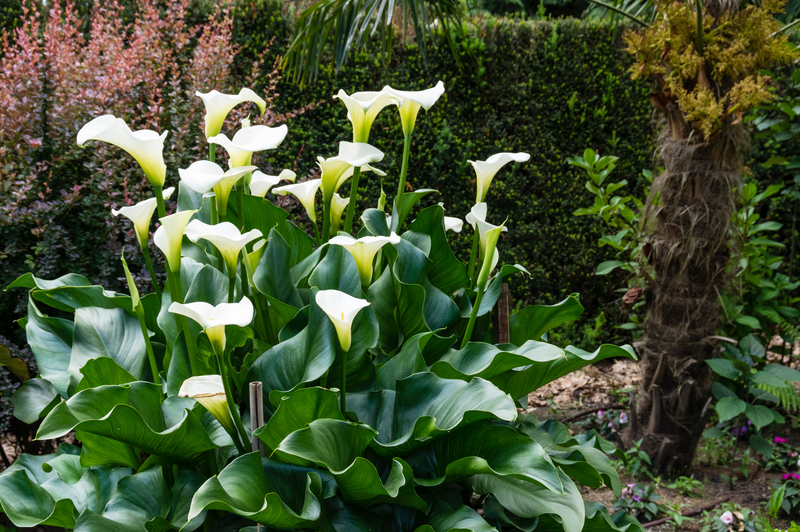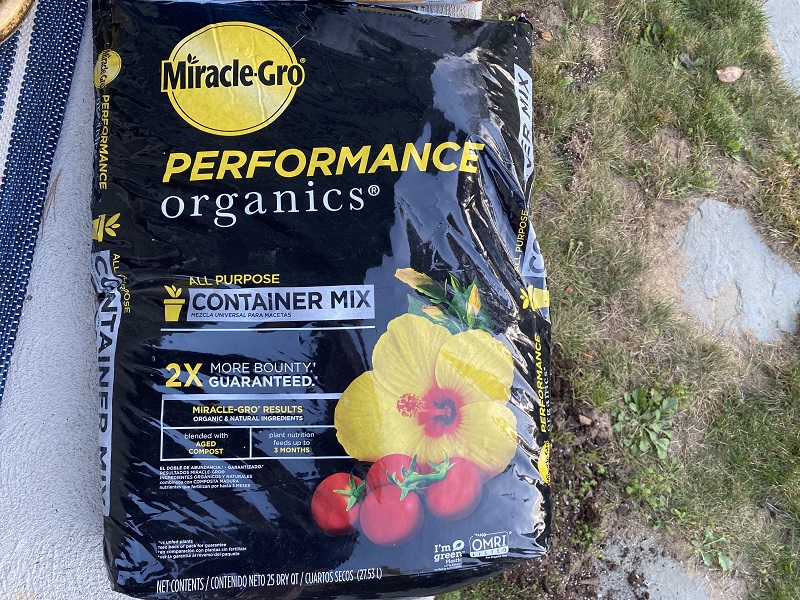The Zantedeschia plant, commonly known as the Calla lily, has various types and varieties. Originating from South Africa, the Zantedeschia does well in sunny, dry areas, making it an excellent houseplant. Its characteristic large, chalice-shaped flowers, called spathes, are a stunning addition to any home. When grown indoors, the flowers will come back strong for you to enjoy for years.
To take care of the Zantedeschia plant, you will need to know how often to water it, how much sunlight it needs, how to prune it, and more. With this information, you will be ready to care for indoor Calla lilies. Keep reading to learn more!
Other Names:
- Calla lily
- Arum lily
- Zantedeschia aethiopica
Types of Zantedeschia plants
While often called a “lily,” the Zantedeschia plant is not a true lily. It is a part of the Araceae family of plants.
There are many color varieties of Zantedeschia. One of the more well-known varieties of Zantedeschia is the Zantedeschia aethiopica, which is known for its big white flowers. However, this is not to be confused with another popular member of the Araceae family, the peace lily (Spathiphyllum).
How Much Sun Does the Zantedeschia Plant Need?
The best place to put an indoor calla lily is somewhere with partial shade and bright sunlight. It will not tolerate any amount of full sunlight or full shade. So, if you have a windowsill with partial shading, that might be an excellent place to put your calla lilies.
Without the proper amount of the sun, the plant will not achieve any photosynthesis and wilt. The flowers may also appear dull or discolored. Too much sunlight, however, and the plant leaves will start to look burnt, and the plant will wither and die.
What Temperature Works Best for the Zantedeschia Plant?
The Zantedeschia plant is very sensitive to extreme temperatures. Ideally, you should keep it between 55- and 75-degrees Fahrenheit. However, if you live in a hot climate and cannot keep your plant below 75 degrees, you can put mulch on top of the soil to help with temperature regulation and keep the plant bulb cooler.
Does the Zantedeschia Plant Enjoy Humidity?
Zantedeschia plants need to grow in moist soil. Keep the plant watered regularly to help maintain humidity levels. However, the Zantedeschia plant can tolerate normal humidity levels indoors as long as the soil is kept moist. If you live in an arid climate, consider placing your plant in a humid area such as a bathroom, kitchen, or room with a humidifier.
How Often Should You Water a Zantedeschia Plant?
Zantedeschia plants need watering at least once a week. Zantedeschia plants require very moist potting soil, so frequently monitor the soil’s moisture levels and don’t let it get too dry. However, be very careful not to overwater your plant. Otherwise, things like root rot will start to affect the plant.
When the large flowers bloom, add liquid fertilizer to your watering schedule every three to four weeks. Adding fertilizer will help keep the flowers looking great for a long time.
What Soil Works Best for Zantedeschia Plants?
Standing potting soil works well for these plants. They don’t require any unique soil. Avoid potting mix with a lot of fertilizer, as too much fertilizer can throw off the pH levels of the soil. Zantedeschia plants prefer slightly acidic soil with a pH ranging between 6.0 and 6.5.
Check out the coffee grounds for houseplants guide to learn about making soil acidic.
Does the Zantedeschia Plant Need to Enter Dormancy?
Once the blooms finish, it is essential to let your Zantedeschia plant enter a period of dormancy.
To do this, gradually reduce watering until the leaves begin to turn yellow. Once the leaves start to dry up and wither, stop watering altogether for two months. Move it to an area that is cool, dry, and dark but not freezing. After two months, gradually start watering the plant again. Creating this dormancy period will encourage the blooms to come back yearly.
What Size Does the Zantedeschia Plant Grow to Typically?
Zantedeschia plants can be large plants. They grow tall stalks with large leaves and flowers. These impressive stalks can grow to be two to three feet tall. The large, dark green leaves can grow up to 18 inches long, and the flowers can be almost 10 inches tall.
Most Common Bugs
Fungus gnats are commonly attracted to Zantedeschia plants. The flies typically do not damage the plants, but they can be a nuisance in your home. If a swarm of fungus gnats is left for too long, they will lay eggs on the plant. The larvae will eventually hatch, feed, and damage the plant, so it is best to deal with gnat problems immediately.
Other common pests can include mealybugs and spider mites. Spider mites will leave thin, white webs on the plant. If your Zantedeschia plant has issues with pests, a gentle bath with insecticidal soap usually eliminates the problem.
Most Common Diseases
The most significant risk to Zantedeschia plant health is root rot, crown rot, and pythium rot. Root rot is common with these plants since they enjoy moist soil, and it can be easy to overwater them. If your leaves are turning yellow or develop any water-soaked lesions, this is a sign of rot. Remove the damaged areas and let the soil dry out so that it is no longer wet.
Zantedeschia plants are also susceptible to moisture-related diseases, such as powdery mildew, Armillaria rot, gray mold, blight, and leaf spots. So be sure not to overwater your plant and keep it in a well-ventilated area with plenty of sunlight.
How Often Should You Repot this Plant?
Indoor calla lilies need plenty of room to grow and thrive. Be sure to plant it in a pot where it will not get rootbound. When repotting, use a pot two to three inches deeper and wider than the previous pot. Depending on how quickly your variety of Zantedeschia plants grows, you may need to repot it every one to three years.
Pruning Tips
One of the more critical parts of caring for a calla lily is prune the plant at least once a year. After it dies back in the winter, cut off any old or unhealthy stems with cleaned shears. They can also be plucked off very easily. The best time to prune this plant is during dormancy, when the plant’s leaves have fully turned yellow.
How to Propagate this Plant
Calla lilies are usually not propagated from stem cuttings like many other plants. Instead, Calla lilies can be propagated by dividing the rhizome or bulb. Use a clean, sharp tool to cut the rhizome and then separate it from the root ball. Repot the rhizome in a new pot with potting soil, water it generously, let the excess water drain out, and then wait!
Conclusion: How to Care for a Zantedeschia Plant
The Zantedeschia plant is a good plant for bouquets and is also just a good plant for indoors. With the information above, you are ready to grow the beautiful arum lilies in your own home.
Similar Posts
How to Take Care of a Donkey Tail Plant?
How to Take Care of a Fuchsia Plant
Should Indoor Plants be Rotated?
How to Take Care of a Boston Fern



